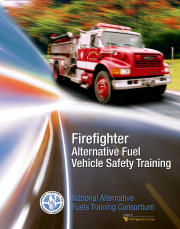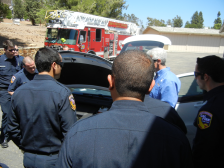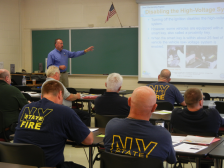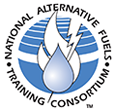Firefighter Alternative Fuel Vehicle Safety Training
 Click for sample Pages
Click for sample PagesAvailable for groups only, this course teaches firefighters the properties and procedures when dealing with alternative fuel vehicles.
- Fuels and vehicles include:
- Electric
- Propane
- Natural gas
- Ethanol
- Methanol
- Synthetic fuels
- Biodiesel
- Taught by NAFTC Instructors
As alternative fuel vehicles become more common, the chance of these types of vehicles being in an accident increases. This course is a valuable resource for fire departments and firefighter trainers to safely and efficiently deal with alternative fuel vehicles.
For more information email Trina Wafle at cristina.dumitrescu@mail.wvu.edu or call her at ![]() (304) 293-7882
(304) 293-7882
Course materials provided:
- Participant Manual – ISBN 978-1-933954-28-8
- Each module contains:
- Illustrations
- Explanatory Figures and Tables
- Review Questions
- Key Terms
Course designed for:
- Fire departments
- Firefighter trainers


Course Description
This course is designed to educate firefighters on the properties and procedures to follow when dealing with alternative fuel vehicles. Participants will be trained on the differences between alternative fuel vehicles and their conventional counterparts and on the proper procedures for safely addressing incidents involving natural gas, propane autogas, hydrogen, electric drive, ethanol and biofuel powered vehicles.
Participants will learn the steps required to secure an alternative fuel vehicle (AFV), how to rescue occupants from a damaged AFV, and proper fire response to an alternative fuel fire. The course details the risks and hazards common to alternative fuel storage, including high-voltage batteries and high pressure gaseous fuel cylinders.
After completing this course, participants will be able to:
- List the key properties, characteristics, and functions of alternative fuels.
- Explain the operation of AFVs.
- Recognize AFV components.
- Identify the risk and hazards common to alternative fuel storage.
- List the steps required to secure an AFV.
- Follow the steps for rescuing occupants from a damaged AFV.
- Demonstrate proper response to fires and fuel leaks of AFVs.


